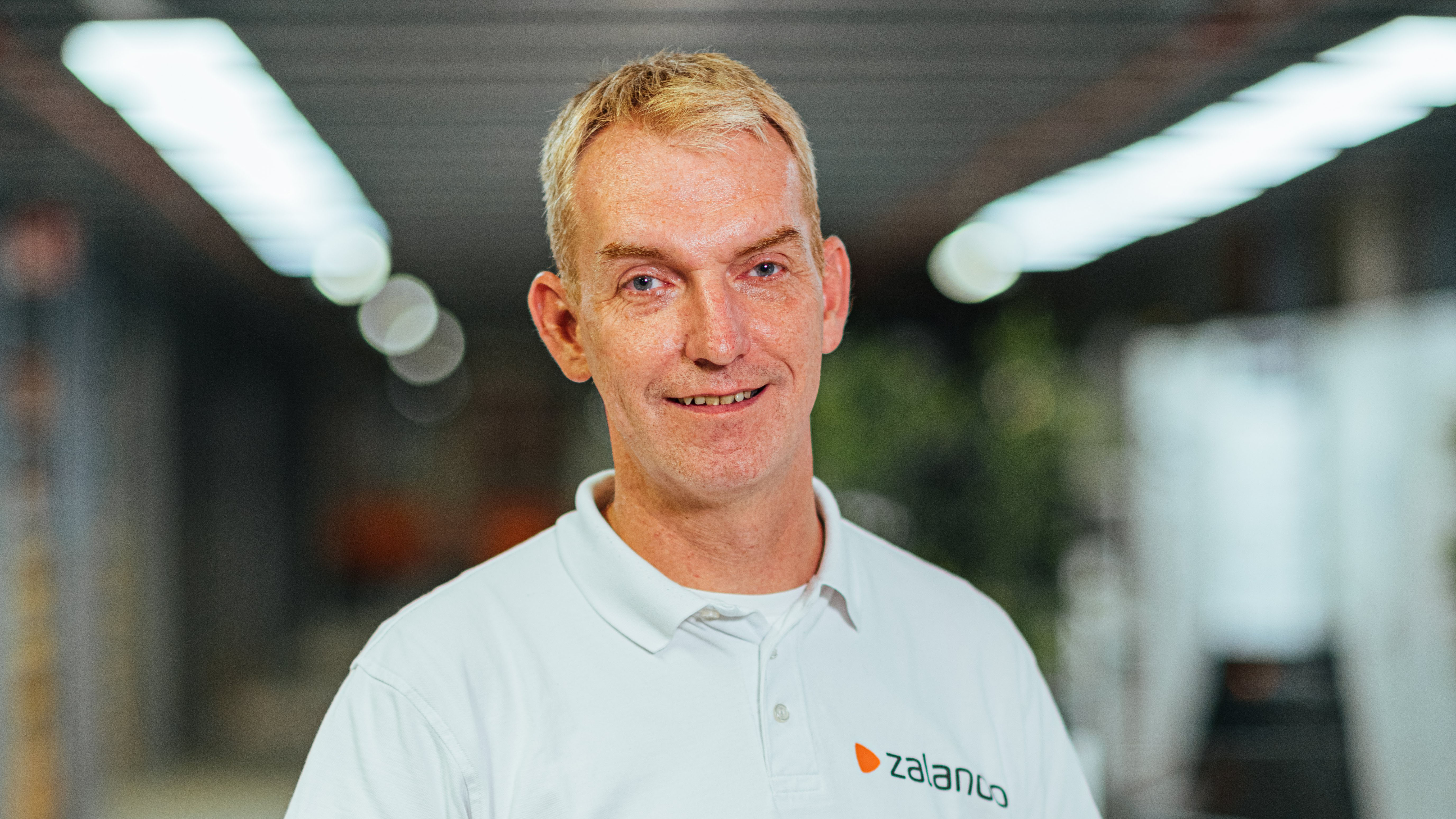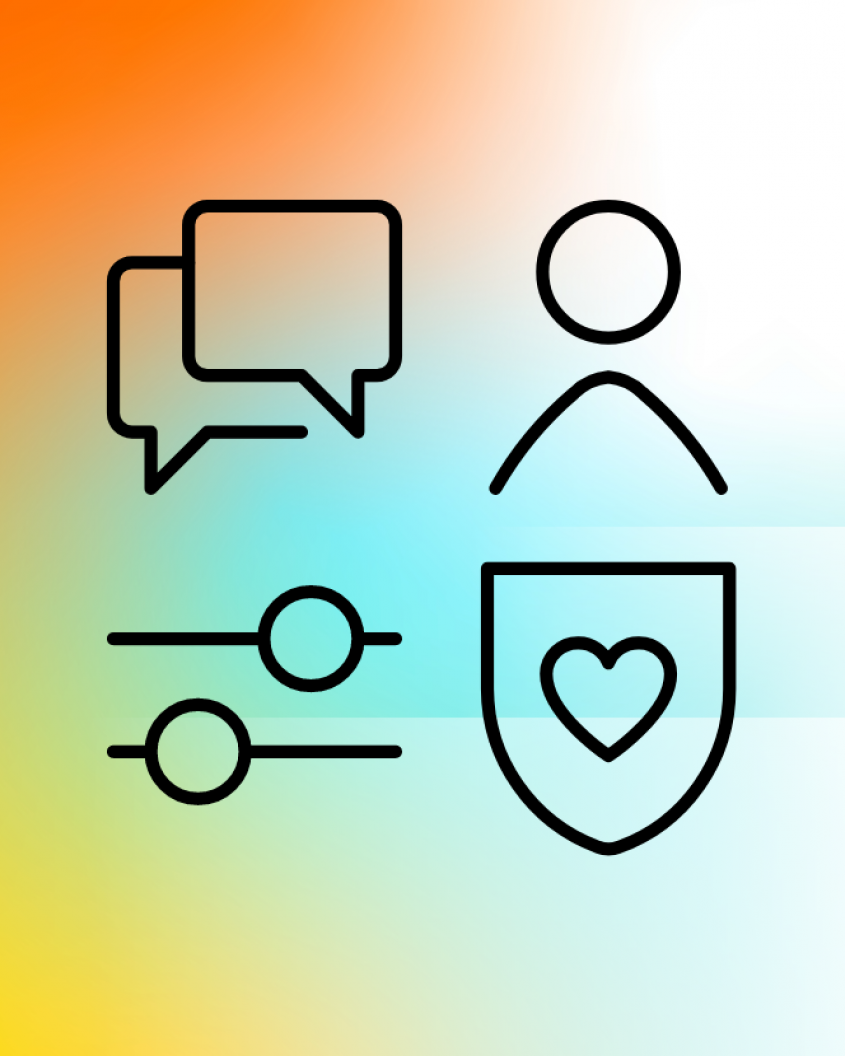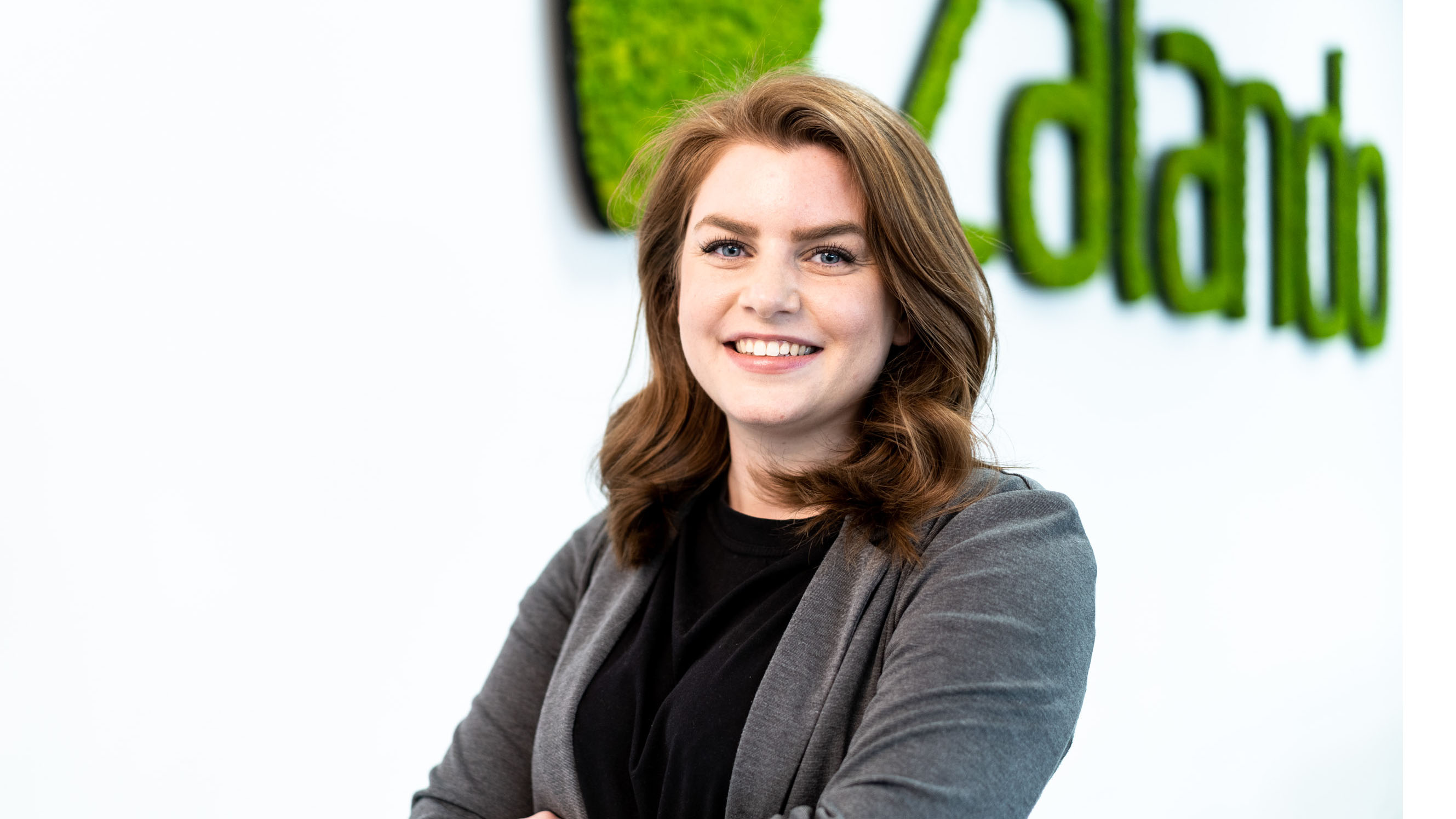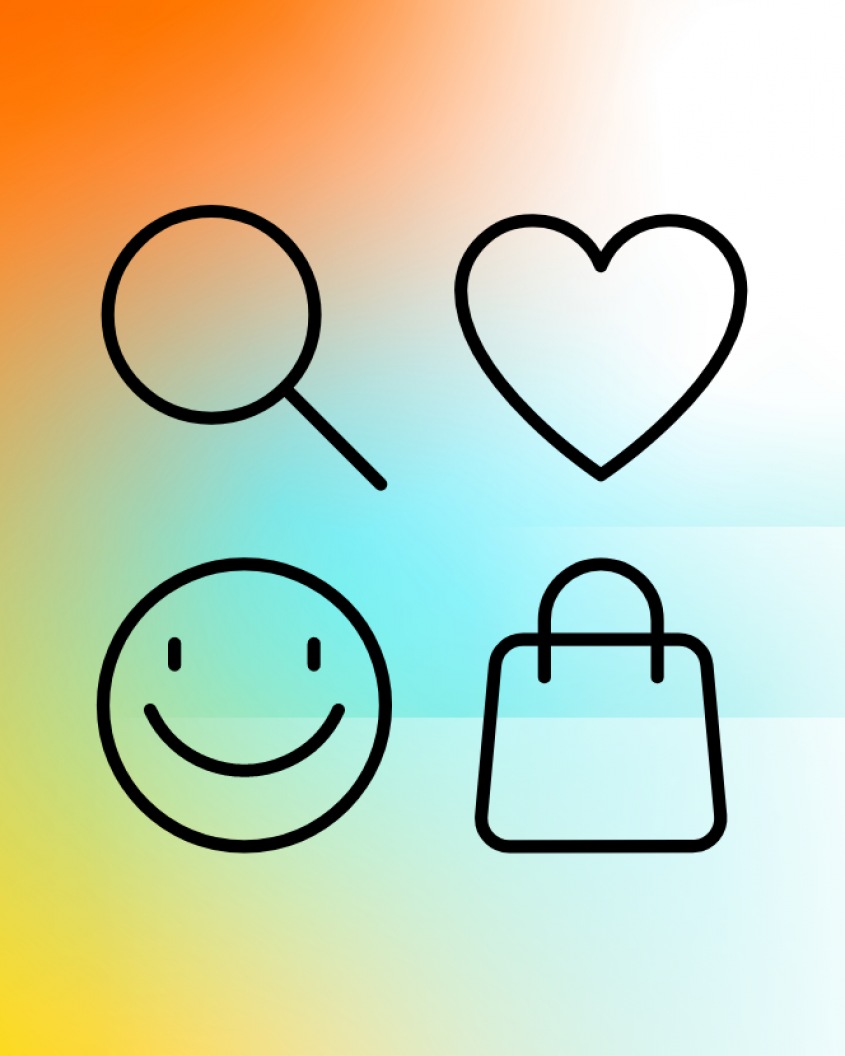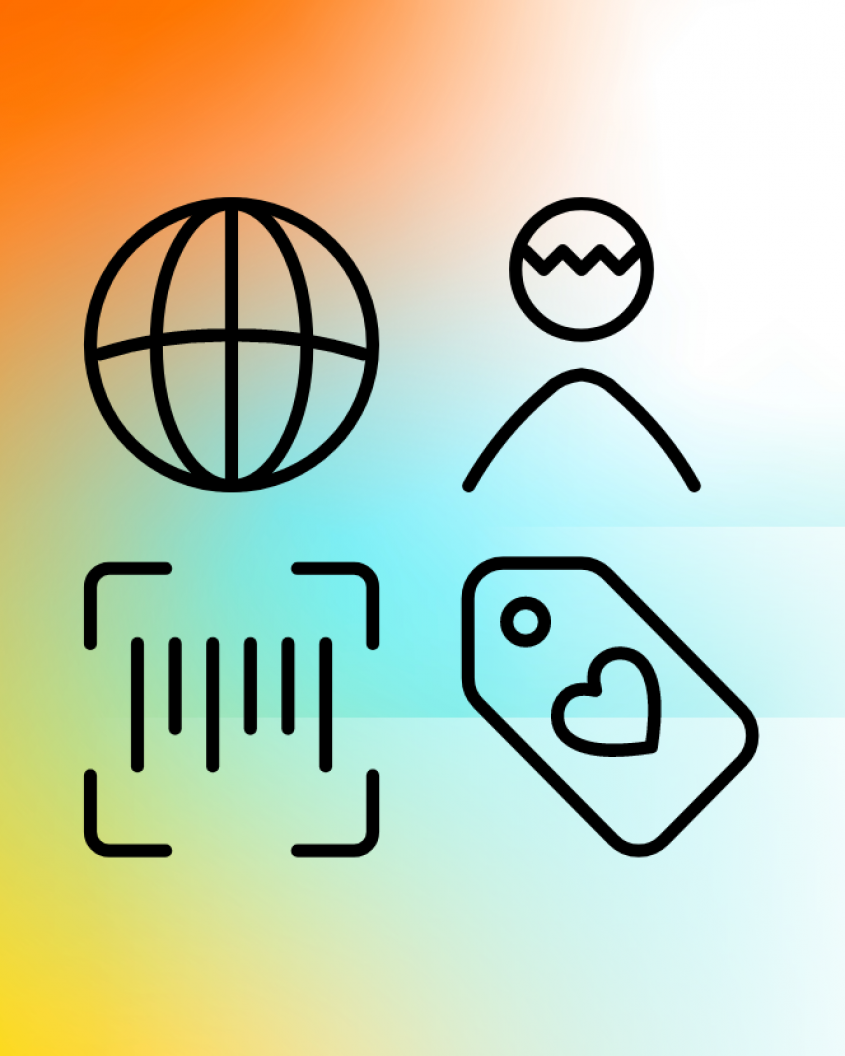do.BETTER - Diversity & Inclusion Report 2021
do.BETTER - Diversity & Inclusion Report 2021
Inclusive by design
Inclusive by design

Inclusive by design
At Zalando, our vision is to be the starting point for fashion—one that is welcoming to everyone. We strive to be inclusive by design, bringing to life the diversity of our talents, leaders, customers, and partners.
Our goal is to faithfully represent the diversity of our communities and wider society. To get there, we all—talents, leaders, customers, and partners—will work together to represent the values that are important to us. Through dedication, respect, and acceptance, we know we can reach the standards we aspire to.
Among other highlights of the past year, we launched our D&I strategy, building on our earlier work by setting out 12 concrete commitments. These contain specific targets against which we can track our progress. Over the past few months, we have worked hard towards these targets and achieved significant milestones. We have launched new training programs for Zalandos and for leadership teams, increased representation on our website, and broadened our assortments to include more items for underrepresented groups. Above all, we have made a continuous effort to listen to Zalandos, our customers, and our partners.
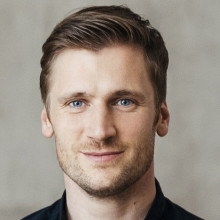
We want to listen, learn, and take action for Zalando to build a diverse and inclusive experience, and to foster an environment where everyone can thrive.
David Schneider, co-CEO
We have taken steps to do better, but we also know we are on a journey. Over the coming year, we will pursue our vision, which is to advance on our commitments, celebrate difference, and be inclusive in everything we do.
Our do.BETTER D&I strategy is based on our pledge to build a company in which inclusive behavior is second nature: Inclusive by design. The strategy consists of four pillars—talents, leaders, customers, and partners—each of which represents our vision of being inclusive by design across our business. This report showcases our progress under each pillar and highlights our plans for the coming year.1
Through our teams and Employee Resource Groups (ERGs), the work goes on: creating a better Zalando and a fashion and lifestyle industry for everyone.
1 Accurate as of August 31, 2021.
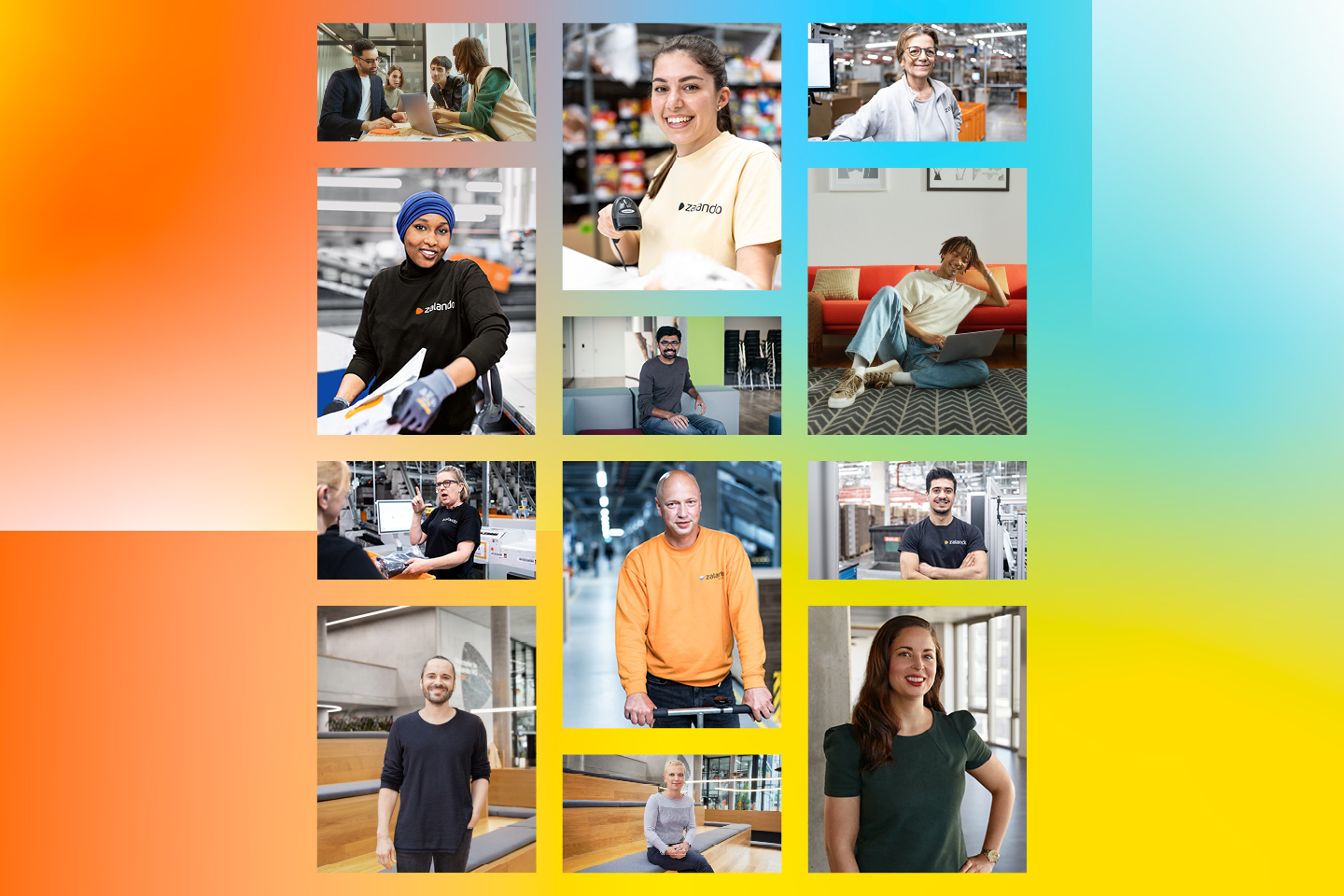
What we have done over the past year
- Unconscious bias training made available for all
- Online D&I dialogues hosted by external D&I thought-leaders
- Training for leaders on disability and other diversity dimensions
- A new approach to hiring women into tech roles
- Talent conversion programs to feed our tech talent pipeline
- A new partnership with the Afro German Academic Network (ADAN)
- The launch of a mentorship program for interns
Workforce diversity
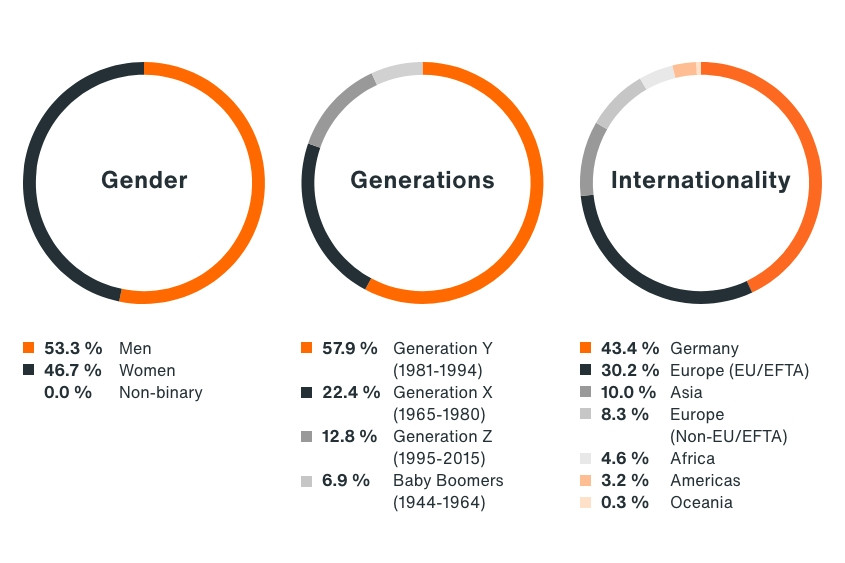
Our commitments
1. Inclusive policies and practices
Our commitment: By 2025, we will ensure equity2 in policies, and practices (hiring, promotion, development) by conducting audits to proactively identify and eliminate biases and systemic barriers.
We aim to provide fair opportunities to all, regardless of ethnicity, ability, sexual orientation, age, faith, socioeconomic background, or gender.
The three examples below were first steps toward the improvement of our policies and practices, in addition to a full review of our current ones.
Over the past year, we have launched and continued a range of forums to help our colleagues learn more about D&I topics. The “Unbias” workshops are designed and run by employees to raise awareness about how bias impacts decision-making and human interactions. The aim of the workshops is to eliminate exclusion due to unconscious microaggressions, as well as to give Zalandos an opportunity to speak about their experiences and learn through listening. Since the launch of the workshops, more than 1,000 Zalandos from across the business have taken part, assisted by fifteen trainers and a dedicated “Train the Trainer” program.
We also offer more formal unconscious bias training, in which we focus on developing awareness of how our individual experiences shape the ways we think and see the world. Through dedicated learning modules, Zalandos can drill down into the essence of bias and see how it plays out in work scenarios. The modules provide strategies to help participants identify and challenge their assumptions, so that they can help make Zalando a more welcoming and inclusive workplace. Over the past year, more than 490 Zalandos took part in the training. Our People and Organization colleagues, working in logistics centers in Erfurt, Mönchengladbach, and Lahr, were the first. The courses were offered online and face-to-face, and are planned to become mandatory at all levels in 2022.
We have also put together a range of online and offline resources on D&I-related topics. As part of that effort, we have launched “D&I Dialogues,” a monthly initiative aimed at amplifying the voices of different communities and identities. We invite every Zalando to develop their D&I knowledge through storytelling and exchange. For both leaders and Zalandos, our dialogues serve as a flexible and accessible learning platform. An important aspect is that participants can jump into conversations, leveraging digital technology to embrace a new, interactive style of learning. The format allows Zalandos to mold their training to their capacity and needs. The dialogues have featured well-known guests, including award-winning author Soraya Chemaly, who spoke about the power of women’s emotional expression, and LGBTQI+ inclusion organization Uhlala, which presented on how we can promote allyship every day. The live-streamed events are available to view on Zalando’s intranet.
To be inclusive by design, we want to better understand our diverse colleagues and their experiences in the workplace. In 2022, we plan an internal D&I survey, which will help us make Zalando as inclusive as it can be. We hope to gain deeper insights on size, distribution of employee communities, experiences, and perceptions. We also hope to detect where we should focus our resources and where leadership attention and accountability is needed. The survey will establish a baseline on representation. Through the lens of our colleagues’ experiences, we plan to measure our progress and take the required steps. We also have Work Councils that represent the voices of thousands of employees of different entities. Among other things, the Works Councils focus on D&I-related projects and initiatives, partially in specific D&I committees. Through close collaboration and lively exchange, they make a significant contribution to maintaining and improving diversity at Zalando.
In March, we started a long-term partnership with the Afro-German Academic Network (ADAN). The goal of the partnership is to promote young talent and enable members of underrepresented communities to obtain work experience in the corporate environment. We also aimed to learn how we can work most effectively with these talent pools. Between May and September 2021, 12 young people completed internships. Each intern was assigned a mentor from our Black Employee Connection ERG, helping them gain as much as possible from their experiences. More broadly, the mentoring scheme has been a powerful learning experience and enabled us to understand what Zalandos of the future will need.
2 Equity refers to the quality of being fair and impartial.
Gender Wage Gap
The average gender wage gap between women and men with the same job and location at Zalando is only 0.9%. When comparing women and men independent of their roles, the wage gap amounts to 22% (Germany-wide, the gap was 18% in 2020)3. We recognize that Zalando SE employs more men than women in senior positions and tech jobs, which receive higher compensation on average. When extending the scope to Zalando Group, the average gender wage gap between women and men irrespective of their role and location is 7.6% (role and location-adjusted 0.8%). We acknowledge that the lower gender gap on group level is driven by our sizable operational workforce (e.g. 42% of the group workforce works in German warehouses).
2. Disability inclusion
Our commitment: By 2025, employees who self-identify as having a disability feel included and supported as measured by the Zalando Inclusion Index.
We aim to provide an inclusive and accessible workplace for all. By creating an environment defined by respect and by providing accessibility support, we can promote inclusion and attract talented people with disabilities.
Our D&I survey will help us better understand our colleagues’ requirements and identify necessary improvements. With that information, we can develop new policies, build evidence-based solutions, and make personalized workplace adjustments.
Over the past year, we have recruited experts to provide more case management support for Zalandos with disabilities and to expand our workplace initiatives. Through our “Healthy Workplace” program, we have invested in accessibility to our office spaces, for example, by installing more automated doors and accessible toilets at our new offices in Berlin.
We are in the process of developing dedicated training for leaders to ensure that they have the knowledge they need to effectively uphold our commitment to disability inclusion. Thanks to this learning, management teams will be more confident in hiring candidates with disabilities, as well as in supporting Zalandos and creating a workplace that is inclusive and accessible to all.
3. Women in tech
Our commitment: By 2023, we will increase the share in women in tech job families to 40% and 60%.4
The tech industry notoriously suffers from gender imbalance, especially in technical roles in software engineering, applied sciences, product design, product management, and software project management.5 Overall, the tech industry employs a lower share of women than men, ~17% in Germany and ranging from ~10-30% globally.6 Our current share of women across all tech roles is 21.2%, compared with 16.6% last year. This is due to efforts such as: doubling the number of junior tech roles to attract women at earlier stages of their careers in tech,diversifying our internal talent pipeline for senior roles, and increasing the representation of women in our talent pipeline overall.
Enabling more gender equity in tech is about more than just attracting and hiring candidates. To achieve our targets, we are changing the way we think about talent—from the moment we make contact with potential hires through our colleagues’ career journeys. Our strategic framework is simple: we look at every opportunity to improve gender balance and to attract, develop, and retain more women.
Over the past year, we have adopted new pre-screening tools that offer candidates the option of live technical interviews, in lieu of online testing, which has allowed women to better engage in and progress through the recruitment process. By having more women at the final interview stage, it allows us to better evaluate all candidates equally.
We have also introduced a “develop versus recruit” approach. This means we emphasize the development of internal talents, enabling women to transfer into tech roles through reskilling programs. We are currently working with digital skills academy StartSteps, which has established relationships with some of the largest tech bootcamps, including Ironhack and Le Wagon. Our new program is set to be launched by the end of 2021.
Through our “Future Zalent” initiative, we have expanded our range of talent programs for career starters. Initially, we are focusing on interns, working students, graduates, MBA interns, bootcamp participants, and apprentices—providing them with more extensive support from day one. For women who have taken a break from work, we have started to build returnship programs, aiming to fast-track the process by proactively matching returnees with career opportunities.
4 By setting a corridor for this target, we aim to achieve a balanced representation of both women and men, hence a share of 40-60% for both genders.
Employee Resource Groups: Fostering communities
Some Zalandos have set up employee resource groups (ERGs), organized on the basis of shared identities or experiences. ERGs create safe spaces in which colleagues can come together, foster community and awareness, and voice their needs. They enhance the workplace experience and create a more respectful and inclusive culture.
Over the past year, ERGs have organized several events aimed at promoting inclusion and raising awareness. For example, in July, our LGBTQI+ ERG hosted a Digital Pride month, which offered Zalandos the opportunity to celebrate diversity, join chat forums, hear from representatives, and engage with experts. In March 2021, the Women’s Network ERG arranged events to celebrate International Women’s Day. These included a panel discussion on personal successes in challenging the status quo and a workshop encouraging underrepresented groups to speak out about their achievements. Our Black Employee Connection ERG organized a session with Google and Adidas, focused on racial equity in the workplace, and our Mental Wellbeing ERG held events focused on mental health challenges and solutions.
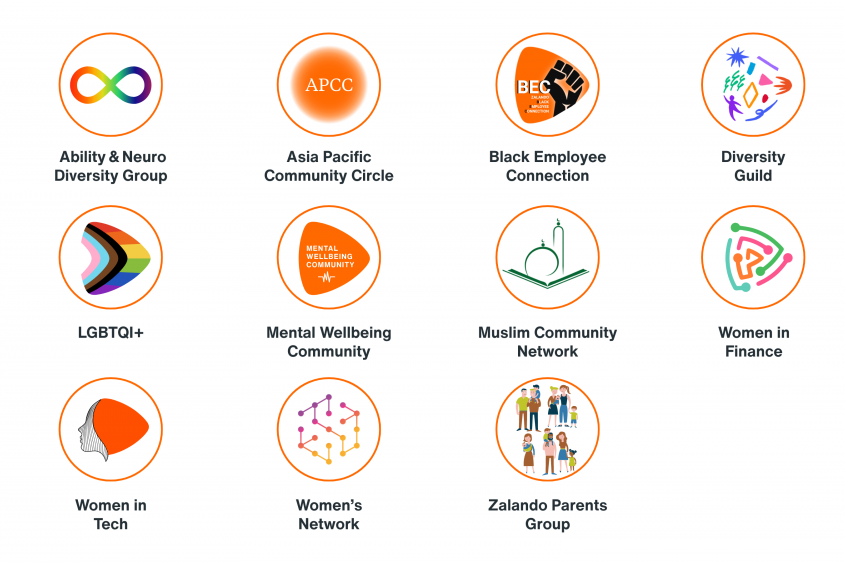
What we have done over the past year
- Workshops for leaders on critical D&I topics
- Business unit action plans to embed D&I in everything we do
- Diversification of our recruitment strategy to increase diversity at the leadership level
- A management training program for women
- Mentoring programs across different marginalized groups
- Training for women in Customer Fulfillment teams
Women in leadership

Internationals in leadership
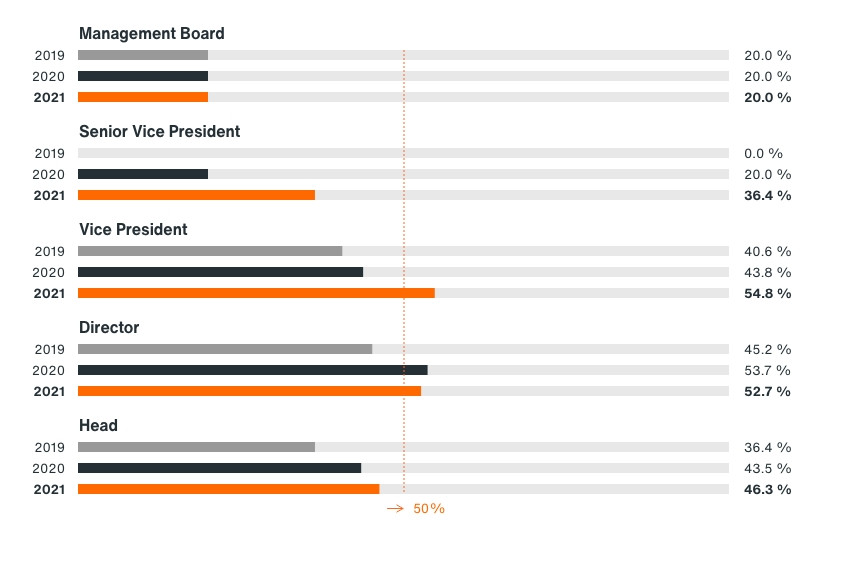
Our commitments
1. Inclusive leadership
Our commitment: By 2025, all leaders will champion Diversity and Inclusion in the way they lead people and teams.
Our aim is for Zalandos to make diversity and inclusion an integral part of their daily lives— creating a cycle of learning and understanding. Our mission starts with helping our leadership teams to become allies, champions, and sponsors. Most importantly, we want our leaders to better understand diverse perspectives and be able to have sensitive conversations and make inclusive decisions.
Over the past year, we have assembled a range of online and offline resources for leaders. Among these, we have offered inclusive behavior training workshops for the management board, senior vice presidents (SVPs), and vice presidents (VPs). This has helped our leaders improve their skills and broaden their D&I vocabulary so that they can engage more closely with day-to-day issues. It means they are better able to act when they see inequity and to hold one another mutually accountable as leaders. As part of the training, our executives have each made personal commitments to help create a more inclusive environment.
Another inclusive leadership evolution has been to bring the management board closer to our ERGs. We have launched a mentoring program that matches board members with individuals in the Black Employee Connection ERG. This is helping our leaders better understand the experiences of the Black community. Given the program’s success, we are looking to rotate it to volunteers from other ERGs and extend the mentoring pool to SVPs and VPs.
David Schroeder, Chief Financial Officer Zalando SE says: “The mentoring experience put me on a great learning journey. It started by hearing about the personal experiences of a Black Zalando colleague firsthand, helping me understand my privilege as a white German man. The program also allowed me to explore the broader topic of diversity and inclusion from many different angles—in a safe space together with my mentor. While there is still a lot to learn, I now feel better equipped to provide teams with guidance on how we can make Zalando a more diverse and inclusive working environment for the good of all.”
2. Diversity & Inclusion action plan
Our commitment: From 2022 onwards, we will have Diversity and Inclusion action plans in all Business Units.
Our priority is to ensure that D&I is not just a "nice-to-have" but an integral part of our everyday lives. This is why we are integrating D&I commitments into our 2022 strategic initiatives and talent strategies, including Women in Leadership, Women in Tech, Inclusive Leadership, and Inclusive Assortment. For example, Customer Fulfillment is activating D&I Action Plans to advance their D&I goals and drive change, prioritizing Women in Tech and Women in Leadership in their operational plans. These plans focus on increasing inclusive leadership behaviors through training, establishing networking opportunities for women, creating deeper support for parents returning to work, and discussing ways to develop shared leadership roles. Priorities are set to support our goal: an inclusive, diverse, and equitable workplace.
3. Cultural diversity and intersectionalities
Our commitment: By 2025, we commit to broaden the representation of visible and invisible diversity dimensions and backgrounds in our senior leadership levels.
We want our leadership to be as diverse as the millions of customers we serve and to ensure we have representation at every level of our organization.
It is important to highlight intersectionality. For us, that means we do not see just one diversity dimension, such as ethnicity, class, or gender, but rather, understand the interconnectedness of these dimensions and how they interact with one another. Through our upcoming D&I survey, we hope to obtain a more layered understanding of diversity representation across the company.
We are promoting understanding of intersectionality through unconscious bias training, helping our leaders become aware of their preconceptions and how these may affect their actions. This helps to build empathy, which we believe is part of the emotional intelligence every leader needs.
Finally, our leaders are working with ERGs to diversify our recruitment approaches. This includes writing job advertisements in language that resonates with different demographics, engaging diverse communities and platforms, and encouraging all Zalandos to refer jobs to their connections. We also work with recruitment companies that specialize in finding talent from diverse backgrounds. Our Executive Talent Acquisition team also continues to focus on counteracting bias, providing gender-balanced hiring options and ensuring diverse representation in our interviewer panels. In the past 12 months, 47% of all executive hires (Directors and above) have been women. In addition, the team has embarked on the identification and evaluation of potential search firm partners with strong records of providing underrepresented talent at executive levels.
4. Women in leadership
Our commitment: By 2023, we will increase the share of women in each of our five7 top leadership levels to 40-60%.8
To address the gender imbalance in leadership positions, we are developing tailored programs for women.
Our initiatives include “Career Circles,” a group mentoring program to support and guide women to become future leaders. In our initial sessions, we invited women interested in career growth. Next, we plan to extend the program to other groups. The program encourages participants to embrace perspectives that can help them achieve their professional goals. Career Circles will help participants feel supported, confident, and encouraged in their career growth. The program provides a network among participants and pairs them with a senior level mentor. Career Circles also provides a safe space for testing new ideas and an opportunity to receive feedback. Furthermore, it offers a new support network and peer mentoring. Lastly, it fosters community building on the values of learning, sharing, and helping and therefore fosters diversity of thought. Research shows that mentoring helps people feel more valued for the work they do, better able to manage their workloads, and more motivated by the company’s vision and direction.9 Our aim is for Career Circles to help us improve on these subjective measures of benefit, as well as objective measures such as closing the salary gap and increasing the number of women being promoted.
7 We included the Supervisory Board level in external communication of the goal to achieve a share of 40-60% in each of the top 6 leadership levels. We focus now only on leadership levels within Zalando where specific internal support measures apply.
8 By setting a corridor for this target, we aim to achieve a balanced representation of both women and men, hence a share of 40-60% for both genders.
9 Based on research from: Abby & Eby, 2003: Mentoring benefits for mentors: Career, learning, and quality outcomes.
Another training program, “Women in CuFu,” is a program run by women, for women. It is focused on leadership in our Customer Fulfillment team, which aims to provide the best experience once our customers click “order.” The program supports women in connecting, sharing, and developing. Women enrolled in the program also help the Customer Fulfillment leadership team to make the workplace more inclusive. Participants guide others through career breaks and analyze exit drivers to inform hiring decisions.
Over the past year, we have made progress in striving to become a role model for the fashion industry. We celebrate our customers and create campaigns to showcase their authentic stories. Through our products and services, we aim to challenge stereotypes around body type and gender so that we can meet the needs of all of our customers. We want our customers to see true reflections of themselves in our images and communications.
Through research, focus groups, and interviews, we involve customers in vital decision-making. Analysing their perspectives helps us find solutions, for example, in the range of assortments we offer and the experience of finding the right size. However, we know we can do more to create a truly inclusive offering. We hope that by sharing our progress, we can learn from our customers, and we know that the best ideas come from listening to different voices. Our most recent market research, for instance, has helped us to identify features and services our customers would like to see to make their Zalando experience more inclusive.
What we have done over the past year
- Audits to assess the fairness of key algorithms, supporting bias-free search outcomes
- Audits for accessibility in our customer experience
- Non-binary style inspiration through content creators and trained stylists
- More modest-wear inspiration, styled by trained content creators
- Continued work toward achieving inclusive and representative images across our platform
Our commitments
1. Inclusive experience
Our commitment: By 2025, we commit to provide an equally accessible, relevant and welcoming digital experience for customers from underrepresented groups and regularly evaluate our digital experience by an independent external panel.
At Zalando, reimagining fashion and lifestyle for the good of all means creating a place where everyone feels free to be who they are. To make our platform as accessible and free from bias as possible, we started with two assessments: in 2021, we conducted an external audit to better understand the experiences of people who use assistive technology on the Zalando website and app. The audit helped us pinpoint areas for improvement and design solutions for better accessibility. In parallel, we audited the algorithms we use to help our customers find what they need. We consider an algorithm fair if it is free from systematic errors that create unfair outcomes, such as preferring one group of customers over others.
Through our audits, we aimed to ensure that our automated decision-making is as fair and relevant as possible. Among our achievements, we have been able to improve algorithmic inspiration for customers who wear petite and tall sizes. Moreover, in the past year, we joined several algorithmic fairness initiatives, including the German Federal Ministry of Justice and Consumer Protection’s corporate digital responsibility code.
2. Representative content
Our commitment: By 2023, our customer experience and communications reflect and celebrate diversity through our visuals, language, and narratives — we also encourage and support our partners to do the same.
Our customers tell us that they want to see diversity celebrated and represented authentically when they shop at Zalando.10 We want our models to represent our customers’ diversity—and we encourage our partners to do the same. We are committed to building a diverse and inclusive model pool, and we celebrate diversity in casting—embracing different ages, backgrounds, and sizes. We use modeling agencies with diverse portfolios and have developed strict diversity guidelines for content decisions.
Beauty diversity is core to our values, and we use minimal photo retouching on our website and app. Moreover, our guidelines celebrate the model's genuine look: retouchers are strictly limited on what they can remove from pictures and are required to leave permanent and temporary skin marks in line with the model’s wishes.
We have trained stylists at Zalon, our curated styling service, to provide non-binary advice, and have used coaches to design campaigns that represent diversity more holistically and sensitively.
We have worked with fashion influencer hayekk, who has tutored photographers and stylists working on our modest fashion collections. At the same time, we are training our colleagues on the needs of our customers to ensure they can help us deliver more.
10 Customer insight from our qualitative and quantitative research in Q1 2021 (with over 20,000 customers and non-customers across European Zalando markets) shows that respondents want to see more authentic representation across diversity dimensions like body type and disability, irrespective if the respondents identify as members of an underrepresented group.
Over the past year, we have reached out to new partners from underrepresented communities. From women’s footwear to beachwear and beauty, we are giving brands from underrepresented backgrounds a platform to showcase their fashions. We commit to working with diverse, creative people — irrespective of the size of their businesses. Through that commitment, we are making a positive statement on the need to keep moving toward a fairer society.
What we have done over the past year
- Collaboration with three partners to promote D&I: The Valuable 500, JA Europe, and Afro-German Academic Network (ADAN)
- Convenient payment terms for smaller partners
- Onboarding of 41 Black-owned brands (as of August 2021)
Our commitments
1. Inclusive assortment
Our commitment: By 2025, we commit to offer a truly diverse assortment for underrepresented groups by providing product choices and thoughtful experiences in every category across price, size, and style.11
To be the starting point for fashion that is welcoming to everyone, we will strive to serve as many underrepresented groups as possible, providing product choices and thoughtful experiences to make shopping with us inclusive by design.
We want to create marketing that reflects our inclusive values. To better represent the range of choice in our assortments, we have rephotographed more than 4,000 items on models who reflect the diversity of our society, as well as expanded our range of products to serve more customers.
Over the past year, we have conducted research on what D&I means to people in underrepresented groups.12 Customers told us they choose retailers and brands because they support what these companies stand for. The research shows how important it is for us to better understand customer experience. As a result of our learnings, we integrated new search filters, providing easier access to inclusive sizing in tall, petite, and plus selections. We also introduced functionality to make it simpler for underrepresented shoppers to find what they are looking for.
11 Underrepresented refers to a person or group of people who are inadequately represented - in this specific case, within the fashion industry across Europe.
12 26% of the survey participants identified as belonging to a minority group.
2. Diverse partner portfolio
Our commitment: By 2025, we will be the European e-commerce partner of choice for brands and retailers that serve or stem from underrepresented groups.
We can drive positive change by working with partner brands and retailers that are aligned with our values. Over the past year, we have developed a program to onboard and retain brands led by people serving underrepresented groups. Through this initiative, many smaller brands have joined our platform.
By August of 2021, we had onboarded 41 Black-owned brands, and we aim to reach 70 new joiners in total over the coming 12 months. Where necessary, we have provided funding to Black-owned brands, aiming to support the development of onsite content and visibility. We also offer them unique payment terms and free marketing campaigns designed by our in-house team. In the Beauty category, we are accelerating onboarding of more inclusive brands, such as those catering to all skin tones.
3. D&I partnerships
Our commitment: By 2025, we will be a central collaboration point in fashion, bringing together brands, retailers, NGOs, academia, community thought-leaders, and members of the media to systematically empower and amplify underrepresented voices in the industry.
By collaborating with our partners, we aim to facilitate change and drive best practice. Through partnerships, we will make progress in areas such as the empowerment of women, from those working in manufacturing to women-led fashion businesses. Later this year, we will launch a pilot program to support the career development of factory employees working on Zalando’s private label collections.
We are proud to support The Valuable 500, which is committed to achieving disability inclusion. Together, we are sharing best practice and creating representative content focused on people with disabilities.
On the day we publish this report (November 4, 2021), we will hold a forum that will bring together industry leaders and decision-makers from our partner companies to discuss D&I best practice. This reflects our commitment to pursuing change at Zalando and across the industry.
We were nominated as “Global Game Changer” by Beyond Gender Agenda (BGA), which engages senior leadership at German companies on diversity and inclusion. We believe this highlights our commitment to our values and strategy.
To promote positive values to young Europeans, we partnered with JA Europe to organize hackathons focused on diversity and inclusion. Together we launched the “Fashion Goes Next” Hackathon in six of our operating countries (Belgium, Germany, Italy, Spain, Sweden, and Switzerland). 308 young people from underrepresented communities were invited to create a product or service that would make the fashion industry more inclusive. The hackathons were supported by more than 70 Zalando volunteers who acted as mentors and judges. The three finalist teams created solutions focused on improving the experience of non-binary customers and customers with disabilities.
We are on a journey
Over the past year, we have taken steps to put our values into practice. We have launched initiatives to train our leaders and help our colleagues understand the many dimensions of promoting diversity and inclusion in the workplace. We have made solid progress on our 12 commitments. The momentum is with us, but we have more to do. With that in mind, we will accelerate our efforts over the coming year, ensuring that we convert our words into actions that make a difference to our talents, leaders, customers, and partners. We understand that promoting diversity and inclusion is not a one-time exercise. Rather, it is a way of living, thinking, and working that we renew every day. Our intention now is to move forward, so that we continue to progress on our commitments and make Zalando the starting point for fashion that is truly welcoming to everyone.
Acknowledgments
Authors: Helene Mathelemuse, Saskia Carter and Stefan Krier, Vikki Leach with contribution from Astrid Arndt, Gabriel Erguezel, Inara Joanethis, Jemma Garner, Lana Criggs, Lucy Stubley, Marc- Andre Luik, Nichelle Appleby, Tom Hurt.
Copywriter: David Wigan (English), Katja Richter (German)
Design: Sultan Berlin Design Studio
The authors would like to thank all colleagues at Zalando who helped create this report, especially André Zelmer, Basma Geigenmueller, Benjamin Schwans, Caleb Spahr, Danilo Boos, David Reiner, David Schneider, David Schröder, Denny Rueckstiess, Dorothee Schultz, Dshamila Müller, Hakan Jonsson, Janine Pirk-Schenker, Jeff Lovejoy, Jose Campillo, Joshua Young, Julia Zweigle, Julien Slijan, Kathleen Danielson, Katrin Fox, Kristall Thamas, Lena Wallenhorst, Matt Stone, Meg Greenhouse, Nathalie Faeltloev, Neha Jain, Niall Starling, Reza Moussavian, Sophia Steinmann, and Veronica Schilling.
Special thanks also goes to Zalando’s Works Councils and Employee Resource Groups for their collaboration and feedback.



